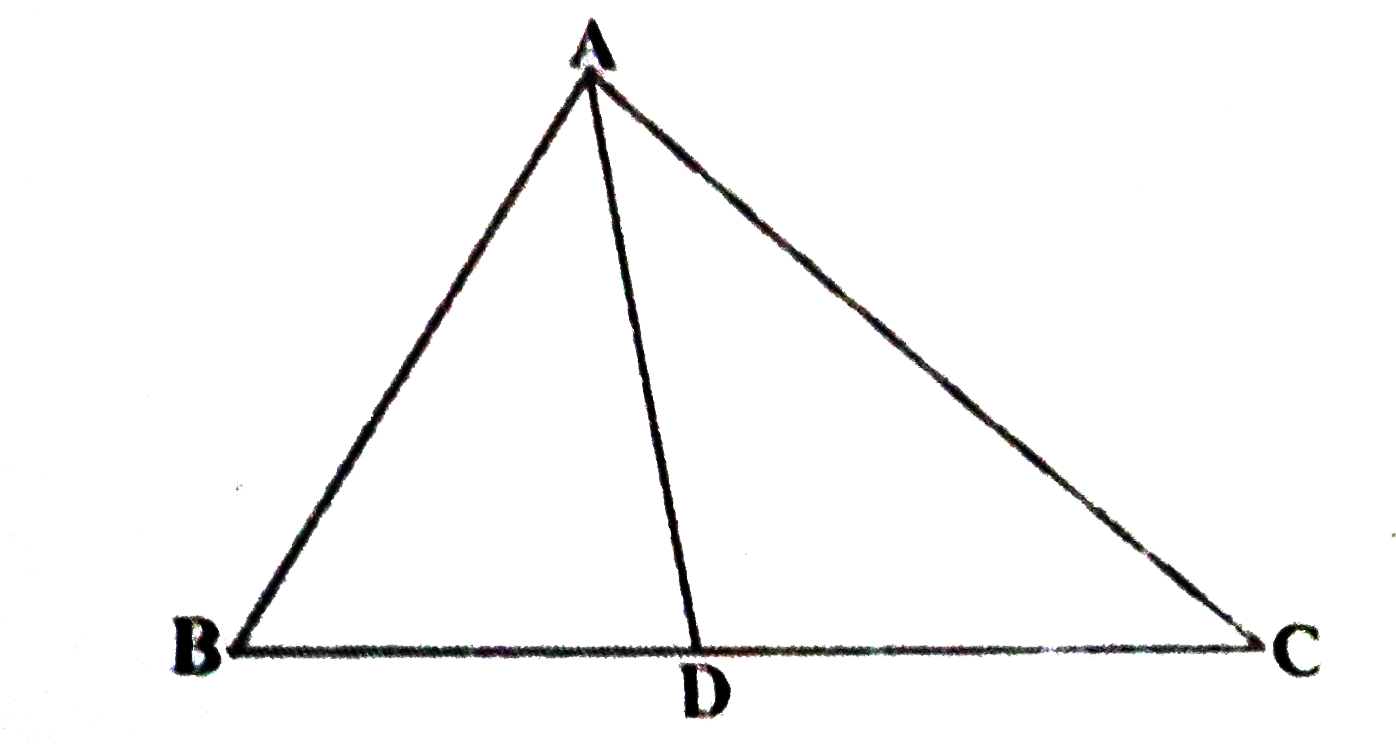A point is on the side of an equilateral triangle such that . Prove that .
To solve the problem, we need to prove that AD2=13⋅CD2 given that D is a point on side BC of an equilateral triangle ABC such that DC=14BC.
1. Draw the Equilateral Triangle:
- Let ABC be an equilateral triangle with AB=BC=CA=a.
- Place point D on side BC such that DC=14BC. Therefore, DC=14a and BD=BC−DC=a−14a=34a.
2. Identify the Lengths:
- Since ABC is equilateral, we have AC=a and AB=a.
- We can denote CD=14a and BD=34a.
3. Drop a Perpendicular from A to BC:
- Let E be the foot of the perpendicular from A to BC.
- In an equilateral triangle, the height AE can be calculated using the formula AE=√32a.
4. Calculate AD using the Right Triangle AED:
- In triangle AED, we can apply the Pythagorean theorem:
AD2=AE2+ED2
- We know AE=√32a, so:
AE2=(√32a)2=34a2
5. Calculate ED:
- Since D is on BC, we can find ED as follows:
ED=BD−BE
- The length BE is half of BC because E bisects BC:
BE=12a
- Therefore:
ED=34a−12a=34a−24a=14a
6. Calculate ED2:
- Now, calculate ED2:
ED2=(14a)2=116a2
7. Substitute into the Pythagorean Theorem:
- Now substitute AE2 and ED2 back into the equation for AD2:
AD2=34a2+116a2
- To combine these, find a common denominator (which is 16):
AD2=1216a2+116a2=1316a2
8. Relate a to CD:
- Recall that CD=14a, thus:
a=4⋅CD
- Substitute this back into the expression for AD2:
AD2=1316(4⋅CD)2=1316⋅16⋅CD2=13⋅CD2
Conclusion:
We have shown that AD2=13⋅CD2.
- Let ABC be an equilateral triangle with AB=BC=CA=a.
- Place point D on side BC such that DC=14BC. Therefore, DC=14a and BD=BC−DC=a−14a=34a.
- Since ABC is equilateral, we have AC=a and AB=a.
- We can denote CD=14a and BD=34a.
- Let E be the foot of the perpendicular from A to BC.
- In an equilateral triangle, the height AE can be calculated using the formula AE=√32a.
- In triangle AED, we can apply the Pythagorean theorem:
AD2=AE2+ED2
- We know AE=√32a, so:
AE2=(√32a)2=34a2
- Since D is on BC, we can find ED as follows:
ED=BD−BE
- The length BE is half of BC because E bisects BC:
BE=12a
- Therefore:
ED=34a−12a=34a−24a=14a
- Now, calculate ED2:
ED2=(14a)2=116a2
- Now substitute AE2 and ED2 back into the equation for AD2:
AD2=34a2+116a2
- To combine these, find a common denominator (which is 16):
AD2=1216a2+116a2=1316a2
- Recall that CD=14a, thus:
a=4⋅CD
- Substitute this back into the expression for AD2:
AD2=1316(4⋅CD)2=1316⋅16⋅CD2=13⋅CD2
We have shown that AD2=13⋅CD2.
Topper's Solved these Questions
Similar Questions
If E is a point on side CA of an equilateral triangle ABC such that BE⊥CA , then AB2+BC2+CA2= 2 BE2 (b) 3 BE2 (c) 4 BE2 (d) 6 BE2
View SolutionA point D is taken on the side BC of a ABC such that BD=2DC. Prove that ar ( ABD)= 2 ar ( ADC)
View SolutionIn a quadrilateral ABCD , given that ∠A+∠D=90o . Prove that AC2+BD2=AD2+BC2 .
View SolutionIn an equilateral triangle ABC if AD⊥BC, then AD2 = (a)CD2 (b) 2CD2 (c) 3CD2 (d) 4CD2
View SolutionProve that the area of an equilateral triangle is equal to √34a2, where a is the side of the triangle. GIVEN : An equilateral triangle ABC such that AB=BC=CA=a. TO PROVE : ar(ABC)=√34a2 CONSTRUCTION : Draw AD⊥BC.
View SolutionA point D is taken on the side BC of a ABC such that BD=2dC. Prove that ar(ABD)=2ar(ADC).
View SolutionIn figure D is a point on side BC of a ΔABCsuch that BDCD=ABAC. Prove that AD is the bisector of ∠BAC.

View SolutionIn ABC , AD is a median. Prove that AB2+AC2=2 AD2+2 DC2 .
View SolutionD and E are points on sides AB and AC respectively of ΔABCsuch thatar (DBC) = ar (EBC). Prove that DE ∣∣ BC.
View SolutionIn Fig. 4.124, E is a point on side CB produced of an isosceles triangle ABC with AB=AC . If AD⊥BC and EF⊥AC , prove that (i) ABDECF (ii) AB×EF=AD×EC . (FIGURE)
View Solution